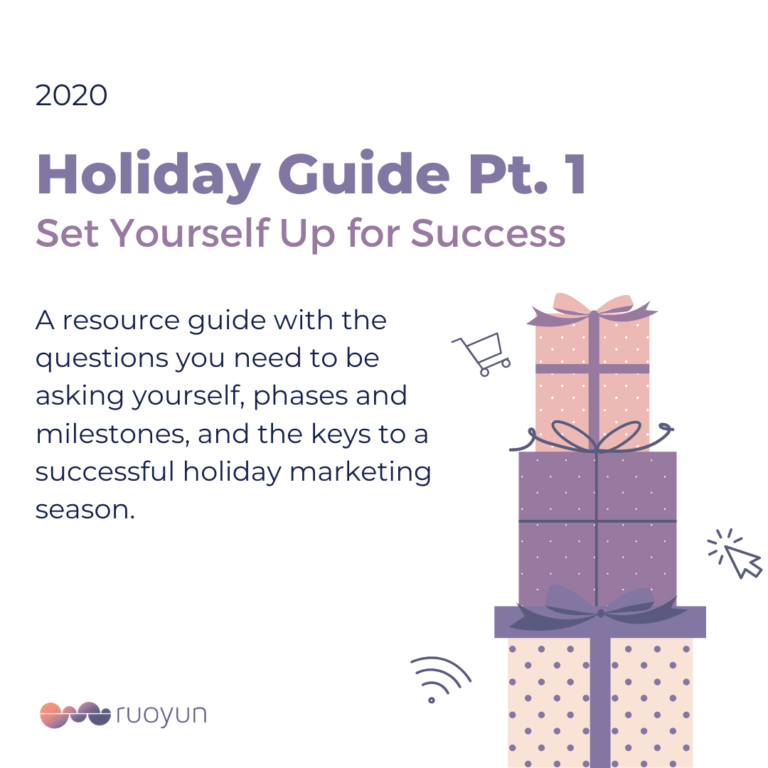Crisis Communication Plan
How to react with intention as the world changes.
In this new age of marketing, we are recognizing that businesses have a powerful voice in conversations around larger societal issues with 62% of consumers wanting companies to advocate for the issues they’re passionate about according to Accenture Strategy.
Traditionally, politics has been separate from business but with the rise of the Black Lives Matter movement in June 2020, the precedence is set. Brands have a voice in issues that they’re passionate about.
As consumers seek to be intentional about who they purchase from, they’re looking beyond the functional needs that a company is satisfying and taking a hard look at what values the business stands for.
To put it simply, people want to feel like they’re able to be confident that the brands will:
- Offer them a great experience
- Be something they’re proud to be associated with
- Align with their values
Why does this matter for your brand?
In a saturated market, consumers can easily hop from one brand to the next. You are faced with constantly having to spend more to acquire new customers unless you invest in building brand loyalty with your customers.
Being transparent about your values is a double-edged sword.
It’s not a simple question of how to respond in the moment, but a matter of how to respond well in the moment.
61% of consumers feel that too many companies use social movements as a marketing ploy. – Business insider
The key is transparency. In order to build trust, you have to be comfortable with being transparent, genuine, and vulnerable. Most importantly, it’s about actions, not just simple words, and how you choose to treat everyone you interact with as a brand – customers, employees, business partners, and our society overall.
So how do you respond well?
Reacting with intention from the start. It’s important to do it right the first time.
“Between stimulus and response, there is a space. In that space is our power to choose our response. In our response lies our growth and our freedom.”
― Viktor E. Frankl
And for brands, the space in between is activating your crisis communication plan that lets you have the time to process the information and the context before you react.
What is a crisis communication plan?
Typically a crisis communication plan is for an internal PR crisis that has happened within the company. Normally, it’s a plan in reaction to something that a member of the company or the company itself has done and is causing both good and/or bad publicity in regards to the company.
However, with the new layer of trust that brands are building in the world, crisis communication plans have evolved to include how the company reacts to external large societal changes like COVID, the BLM movement, elections, national celebrations, and tragedies.
The power behind having a plan is that:
- It forces space for you to process the situation that you are facing without needing to react immediately with knee jerk reactions.
- Your company values are discussed well in advance, so your value definition is built outside of a highly stressful situation. You know where you align, and you can act accordingly to future situations.
- You save time in the long run- you have an action plan so that you can react to any situation in a timely manner.
It helps answer questions that can cause a lot of lag or avoid creating only surface level answers like:
- What societal issues do we as a company feel like we should be speaking to?
- What do we say if we feel like we shouldn’t be speaking on an issue?
- Where do we stand in terms of our culture and values on these issues?
- Who should be involved in approving the content?
- How quickly and where should we respond? What platforms will we speak on?
- How can we quickly define our values on an issue that we haven’t foreseen?
Who should be a part of this conversation to set up the plan?
Traditionally, it would be the “higher ups”. However, no one knows better about what’s going on than those on the ground so ideally when designing a crisis communication plan, you want to have the major stakeholders who would be immediately affected by the plan including:
- Digital marketing
- PR
- Culture/HR
- Marketing
- Customer Service/Community Engagement
The big takeaway is to understand that this communication plan affects both your customers and your employees, and furthermore, it’s a reflection of who your brand is as a living person.
Brands are living organisms made up of amazing human beings that interact with other humans (customers and referral partners) and impact our community at large.
-Ruoyun Xu Killian
So this plan needs to be reflective of who you are that would make both of your employees and your customers proud to be a part of.
Take a deep breath
Remember, the pause between reaction and action is where we hold our power.
Understand that what your customers care about the most is what you say and how you react to a situation- not how quickly you say it. Even in a world of instant gratification, I would argue that it’s better to have a thought-through response than a quicker response time.
If you’d like to chat more about building a crisis communication plan or how do you build in a system where all major players are able to communicate at the same table, contact me at ruoyun@rxuconsulting.com






